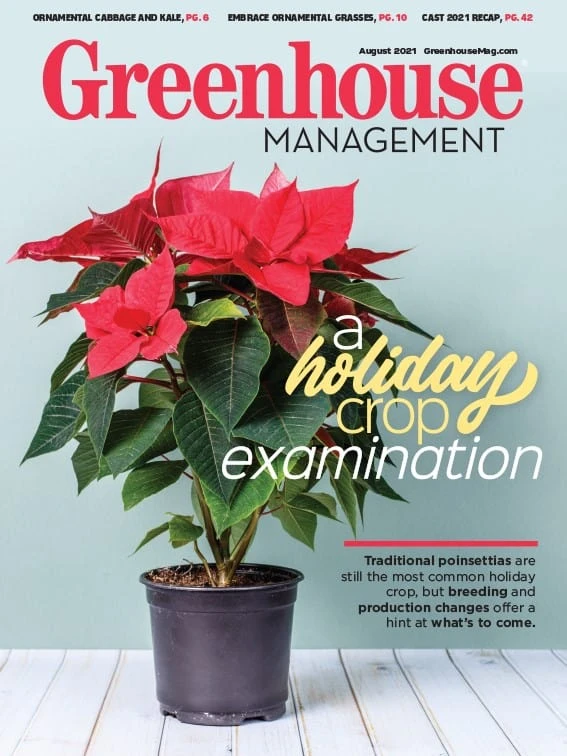
Greenhouse Management: Now that we are at last somewhat past the pandemic’s peak, how is green retail doing and what has changed?
Bridget Behe: I think a big uptick in interest and in purchases, particularly for 2020, remains true. I think we saw things being sustained into 2021 too. Most folks that I’ve interacted with have had another good year. I think we’ve got an opportunity to keep the train moving down the track and I think we can capitalize on that. But I also know that folks are stretched thin, especially with the lack of available labor [in some places]. I think it’s going to be, as it always is, a challenge.
GM: Where do you think growers’ heads are at currently?
BB: I interact more with retailers, but I think growers are more concerned about what they are going to grow and how it’s growing more so than the quantities for next year. Though I do not think that anyone is going to go up dramatically in scale again. I think, conservatively, there might be a plateau. But optimistically, I think we can still affect some kind of increase. I think some of that revenue increase is going to have to come from raising prices that are not easily compared. For example, four-inch geraniums or six-inch poinsettias or a flat of impatiens — those are what we call sign-post items. People can, and do, price shop on some of those items. Particularly the mixed containers and some of the hanging baskets, I think that’s the space where most retailers are going to have a chance to recoup the cost increases that they are facing right now. But I think there is great reason for optimism, but I don’t think anyone is expecting another 30% increase for 2022.
GM: How are retailers when you interact with them?
BB: They are stretched thin, too. The labor issue is affecting them just as it is affecting not just horticulture, but all other industries. So having to do more with fewer people has really stretched them a bit further because some of them are still trying to do online orders and curbside delivery. And those were options that, before 2020, really didn’t exist for most retailers. Those who had already gone down that path were in a better position to respond to those needs. But a lot of retailers jumped into those either in a limited or extended capacity. That certainly stretches your business model if you don’t have good labor ready to work. And it might not be something that they feel they can walk back now even as more customers come back to the store.
Get curated news on YOUR industry.
Enter your email to receive our newsletters.
Explore the August 2021 Issue
Check out more from this issue and find your next story to read.
Latest from Greenhouse Management
- CEA Alliance celebrates bipartisan introduction of Supporting Innovation in Agriculture Act
- Dümmen Orange North America celebrating 25th anniversary in 2025
- CEA HERB Part 1: Best management practices for culinary herbs
- Lawsuit challenges new H-2 visa rules
- CEA HERB Part 2: A guide to increasing the sowing density of culinary herbs
- Illinois Landscape Contractors Association changes name to Landscape Illinois
- 2025 Proven Winners Horticulture Scholarship applications now open
- ICL’s Gemini Granular herbicide now registered for use in California





